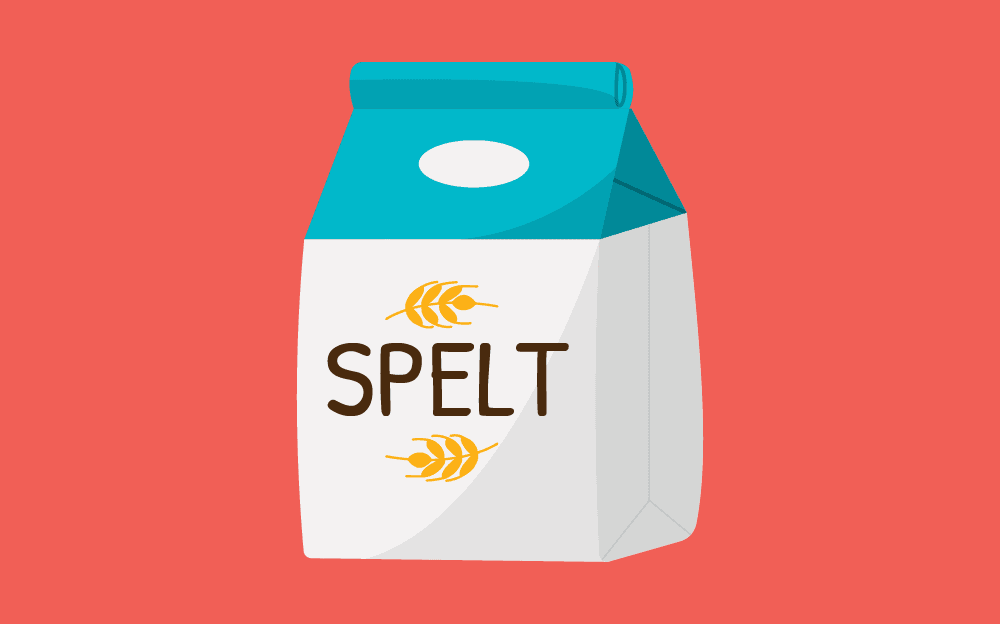There’s been a rise in popularity of so-called “ancient grains” recently. The irony is that as the name suggests, grains like spelt, millet, and farro have been around a long time, but are only now getting renewed attention.
The reason for their spotlight is that many claim that they are more nutritious than modern grains. Since most modern grains have been adulterated in one way or another – highly refined, genetically modified, or sprayed heavily with
pesticides, it’s easy to imagine how ancient grains might be a better choice.
What is Spelt?
Spelt is an ancient whole grain grown in many parts of the world. Spelt is related to wheat and is similar in nutritional profile to whole wheat but is easier to digest thanks to its weaker molecular makeup. It is also more water soluble. But just because it’s easier to digest than wheat doesn’t mean that it is safe for those who cannot tolerate gluten. Read on for the full explanation.
Is Spelt Safe to Eat on a Gluten Free Diet?
If you have a celiac disease or
non-celiac gluten sensitivity (NCGS), the bottom line is that spelt still contains gluten and can cause similar reactions to wheat when eaten. For those with celiac and non celiac gluten sensitivity, spelt should be avoided.
A
1995 research study from Germany concluded that the gluten in spelt is toxic to those with celiac disease. A
2007 research study performed on human cell lines showed spelt to exhibit toxic effects. A 2018 study published in the journal,
Food Chemistry, showed a higher level of gliadin (toxic gluten) in spelt varieties as compared to wheat.
A
case report published in the Journal of Pediatric Gastroenterology and Nutrition showed that spelt introduction into the diet of a celiac patient led to clinical signs of GI damage. The authors of the report go on to say:
this case report strongly suggests that spelt wheat has a toxic effect on the small bowel mucosa of a patient with CD. Thus, inclusion of spelt wheat in the diet of patients with CD should be discouraged.
If you don’t have a gluten intolerance, or if you aren’t sure, you can actually use spelt as a tool to see how you tolerate gluten. This is referred to as the Spelt Test, and should be attempted after having fully eliminated gluten for at least two weeks.
To take the Spelt Test, choose a food that is primarily spelt with few other ingredients, and then choose a simple meal that consists of only foods you tolerate well. Eat the spelt-containing food alongside your meal and then observe any reactions. If no reactions occur, try the same test again the next day.
Note that even if spelt is tolerated, all grains, even ancient grains, tend to be
inflammatory to the gut and far less nutritionally dense than whole foods like fruits, vegetables, and high-quality proteins and fats.
Spelt Alternatives
There are a number of alternatives to spelt, some of which are better than others for those with celiac disease and those who are gluten-sensitive. Check out several popular options listed below, as well as
this resource for more on how to use them.
- Sorghum: Sorghum is another ancient grain that is classically considered gluten free, but contains gluten-mimicking proteins that are not recommended on a true gluten free diet.
- Quinoa: Quinoa is not a grain but a seed. It is gluten free, but like buckwheat, its processing is often performed in facilities that also process other grain-based foods and cross-contamination is a significant concern. Additionally, some studies have found that those with gluten issues have similar reactions to quinoa. You can learn more about quinoa in this research update.
- Tapioca: Tapioca flour is extracted from wet pulp of the yucca root, which is naturally gluten-free. The starchy liquid is then bleached and dried into flour and has a neutral taste. Tapioca flour is high in carbohydrates and has a high glycemic index, so it should be used in moderation, especially in people with diabetes and those who struggle with blood sugar control.
- Cassava: Cassava is made from the same plant as tapioca (yucca) except that it is made from the entire tuber root, not just the pulp. This results in a flour that is easy to digest and light in flavor, but higher in fiber than tapioca.
- Almond flour: Almond flour is made from ground dried almonds and therefore has many of the same health benefits as almonds. It maintains its rich and nutty flavor and has a light texture.
- Tigernut flour: Tigernut flour is made from the root of the plant, not a nut as the name implies. It is high in fiber and protein and acts as a resistant starch. This means it can help to feed the good bacteria in the gut and also help to balance blood glucose levels. It has a nutty and sweet flavor and a texture similar to almond flour.
- Coconut flour: Coconut flour is made from the meat of fresh coconuts, which means it maintains a light coconut flavor but also contains many of the same beneficial properties – it is a great source of fiber and is low in carbohydrates. Coconut flour is a great option for baking but is a very dry flour that is never used in a 1:1 ratio to typical wheat flour unless extra liquid is added.
For more information, you can read this
comprehensive breakdown on gluten and grain free flour options.
The Takeaway
Spelt is a gluten containing grain that has been shown to be toxic for those with gluten sensitivity and celiac disease. Therefore; it should definitely be avoided if you are following a gluten free diet. Try experimenting with some other grain-free products that are certified gluten-free as an alternative to spelt and other ancient grains.


2 Responses
Thank you for clarifying the misconceptions about spelt and gluten! I always thought it might be a safe alternative for my gluten sensitivity, but now I understand that it’s still not suitable. Your detailed explanation really helped me!
I found this post really insightful! I had always thought spelt was gluten-free because it’s often mentioned as a healthier alternative to wheat. It’s important to clarify that it does contain gluten, so thanks for shedding light on this topic. I’ll definitely be more mindful when choosing grains in the future!